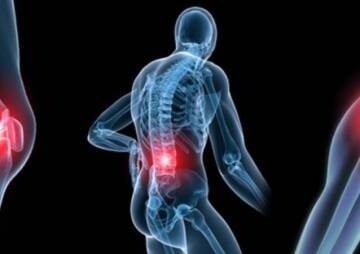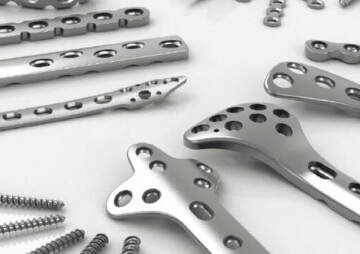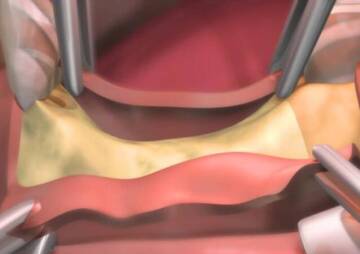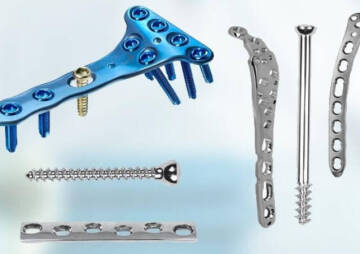-
kitengo
Craniomaxillofacial Surgery
Orthopedic Surgery
Spine Surgery
Orthopedic Implants
Hip Surgery
Knee Surgery
Pectus Excavatum
Bone Graft
Disinfectants
Healthcare
Various Methods that Affect Recovery after Lumbar Surgery
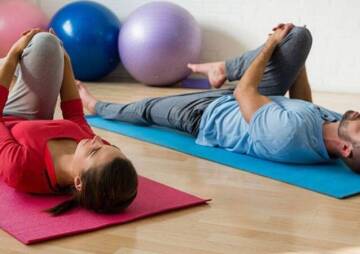
...
Your physiotherapist may recommend that you exercise one to three times a day for 10 to 30 minutes for faster recovery. This article can guide you on how to exercise after lumbar surgery.
Regular exercise is essential for restoring strength, a gradual return to daily activities, and complete recovery after lumbar surgery. Your orthopedic surgeon and physiotherapist may recommend that you exercise one to three times a day for 10 to 30 minutes for faster recovery. However, these exercises must be done according to the correct and completely safe principles not to damage your spine again. This article can guide you on how to exercise after lumbar surgery.
Why Do You Need to Exercise After Spine Surgery?
Spinal surgery is an essential step for the body's health, and post-surgery rehabilitation is a vital help for patients to get better results from their surgery. Rehabilitation, which includes physiotherapy and exercise, can help patients to recover entirely from spinal surgery as soon as possible.
These exercises and rehabilitation perform the act of leveling and balancing the body. For instance, if you buy a new tire for your car, the new tire will not last and will be destroyed if it is not level and balanced. Your spine surgery is like new tires, and the role of physiotherapy and exercise is to align, balance, and adjust the engine to ensure the positive effects of the surgery

There are several methods which physiotherapists typically utilize to help the patient to stay in the right physical condition and recover from back injury and surgery:
- using ice packs to reduce pain
- putting the spine in specific positions using braces
- training and performing particular sports movements
- using electrical devices
Many of these back pain relief techniques are simple, easy, and learnable and can be done at home or work during the day. It is surprising for many patients to learn how easy it is to use ice packs or change movements, postures, and exercise to help reduce postoperative pain.
When Do Therapeutic Exercises Start After Back Surgery?
Most surgeons recommend that patients take short walks and gentle stretching exercises in the first week after surgery. This is best done under the supervision of a physiotherapist and surgeon.
The patient should regularly move from the first day after surgery, even if it hurts a little. If the pain is severe, walking should be stopped. According to surgeons, however, the patient must walk and endure during the recovery period.
Between the first and seventh days after surgery, patients can begin basic stretching exercises but to the extent that they do not feel pain. If the patient feels pain for any reason, these activities should be stopped.
Medium-level exercises are recommended for patients from the second to the sixth week, but all these movements must be coordinated with the doctor and physiotherapist in advance. These movements stabilize the muscular strength of patients.
And after the sixth week, advanced movements and the use of the ball are necessary to strengthen the back. However, it is still emphasized that none of the movements should be done until the surgeon approves.

The First Stage of Pedestrian Treatment
People are more likely to be overweight after surgery due to limited mobility, especially in the first 2 to 3 weeks after surgery. Walking after lumbar surgery is the most important exercise which is useful for burning calories. Moreover, it helps restore muscle strength along the spine and helps the body recover from surgery's local inflammation. Walking improves blood flow throughout the body and makes it easier for oxygen and nutrients to reach the spine's muscles and tissues.
The most vital point about walking after back surgery is to try to stand naturally while walking so that your spine is in a good position.
Exercises at the Primary Level
These exercises are suitable between the first and seventh days after surgery:
Ankle Pumps
- Sleep on your back
- Move the ankle up and down.
- Repeat this exercise 10 times.

Heel Slides
- Sleep on your back
- Gently bend and straighten the knee.
- Slide the heel to the ground.
- Repeat this exercise 10 times.

Abdominal Contraction
- Lie on your back with your knees bent and your hands on your abdomen and under your ribs.
- Tighten the abdominal muscles to pull the ribs back.
- Be careful not to hold your breath.
- Hold the abdomen for about five seconds and then return to the original position.
- Repeat this exercise 10 times.

Wall Squats
- Stand and lean your back against the wall.
- Place your feet about 30 cm in front of your body.
- Tighten your abdominal muscles.
- At the same time, gently bend your knees to a 45-degree angle.
- Hold for five seconds. Then return to the standing position.
- Repeat this exercise 10 times.

Heel Raises
- Stand and distribute your weight evenly on both feet.
- Slowly lift your heels off the ground. If necessary, get help from the wall to keep your balance.
- Hold for five seconds, then slowly lower the heels.
- Repeat this exercise ten times.

Straight Leg Raises
- Lie on your back with one leg straight and one knee bent.
- Tighten your abdominal muscles to secure your back.
- Gently lift the right leg 15 to 30 cm off the ground. Hold for one to five seconds and rest on the floor.
- Repeat this exercise for each leg twice.
Be careful to raise your leg so that it does not put pressure on your back. You do not have to stay in that position for five seconds. Whenever you feel uncomfortable, put your leg on the ground.

The Intermediate Level Sports Program
These exercises are suitable for the second to sixth week after surgery:
Single Knee to Chest Stretch
- Lie on your back and bend both knees.
- Take the thigh from the back of the knee and pull the knee towards the chest.
- Stay in this position for 20 seconds and then slowly lower your foot.
- Repeat this exercise five times for each foot.

Hamstring Stretch
- Lie on your back and bend your legs.
- Hold the thigh from behind and slightly closer to the knee.
- Gently straighten the knee upwards until you feel a stretch in the back of the thigh.
- Hold for 20 seconds. Then gently return the foot to its primary position.
- Repeat this exercise five times for each foot.

Advanced Level Sports Exercises
From the sixth week onwards, you can add these exercises:
Hip Flexor Stretch
- Lie on your back on the edge of the bed. Keep your knees toward your chest.
- Then slowly lower one leg into a bent position until you feel a stretch in the thigh muscles.
- Hold for about 20 seconds and then return to the primary position.
- Repeat this exercise five times for each foot.

Piriformis Stretch
- Lie on your back and bend both knees.
- Cross one foot over the other.
- Pull your opposite knee toward your chest until you feel a stretch in your buttocks and thighs.
- Hold for 20 seconds, then reset.
- Do this exercise for five seconds for each foot.

Back Stabilization Exercises With the Swiss Ball
In these exercises, the abdominal muscles must remain contracted. Do each exercise for 60 seconds:
Lying on the Floor
- Lie on your back with your knees bent and your back muscles on the ball.
- Pull one hand up, and the other hand down and around the body.
- Now slowly raise the hand above the head to the opposite foot on the ball. Raise the opposite leg slightly at the same time. You do not need to raise your arms and legs too much. Then return to the primary state.
- Now do this exercise with the opposite hand and foot.

Sitting on Ball
- Sit on the ball and place your feet on the floor. The hips on the ball and the knees should have an angle of ninety degrees.
- Then pull one of the arms up and lift the heel of the opposite side from the ground. Do the same with the other hand and foot. Try to lift your legs to five inches off the ground, finally.

Standing with the ball
- Stand with your back to the wall and place the ball between your waist and the wall.
- Bend your knees gently 45 degrees to 90 degrees. Hold for five seconds. Then straighten your knees.
- You can do this exercise by bending your arms up and down while bending your knees.

- Lie on your stomach on the ball
- Place your hands on the floor above your head. Place the toes on the floor from below and lift the hands off the ground one by one.
- Then alternately lift your legs 5 to 10 cm off the ground.
- You can combine two movements and lift the opposite arms and legs off the ground.
- Just be careful not to arch your back in all these situations.

- Lie on your stomach on the ball.
- Place your hands on the floor from the front and move slightly to move the ball from under your abdomen to your legs. Then move back again so that the ball goes back under the abdomen.
- Be careful not to bend your back.

When Can I Start Exercising After Surgery?
Several factors determine when you can return to regular exercise after lumbar surgery, such as:
- What kind of action did you take?
- How well are you doing?
- What is your doctor's opinion about your return to routine exercise?
If the operation is performed at only one point in infusion surgeries, you will probably have to wait two to three months to resume your exercise routine. If the fusion is done on several beads, you will probably have to wait four to six months.
In less invasive methods, the waiting time is at least four weeks.
Note that before you want to return to your previous exercise routine, the surgical area should be completely healed and painless, and all postoperative symptoms should disappear. Your doctor may desire to use X-rays to evaluate your recovery

Remember to slowly do all the exercises, follow your doctor's advice, and listen to your body's reaction. If you feel short of breath, chest pain, or dizziness during exercise, exercise should be stopped because these symptoms indicate excessive pressure on your back.
All these exercises are for your faster recovery. Any excessive pressure and any mistake can increase your back problem.
Do these exercises and send them to people who have had spine surgery to help their health

